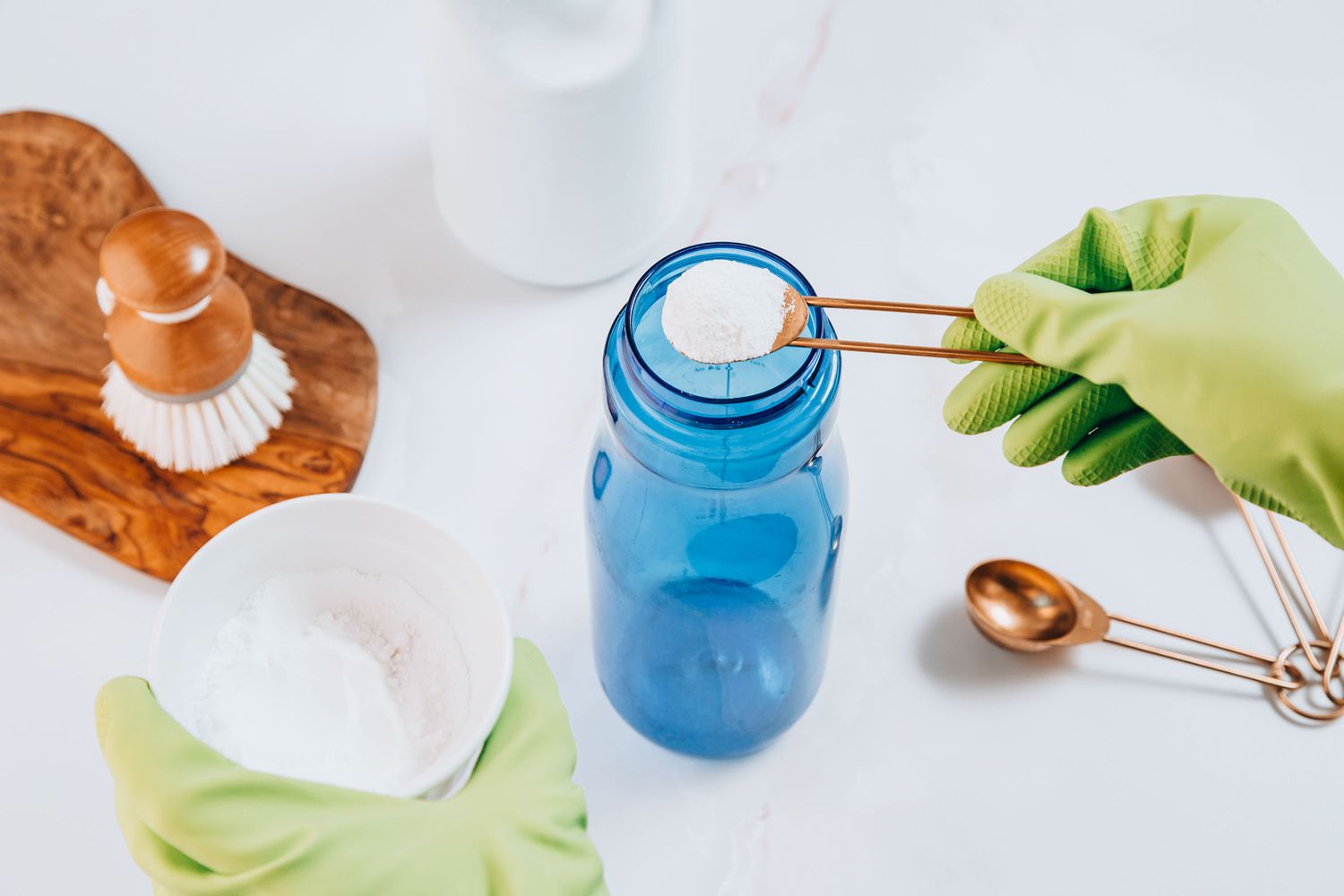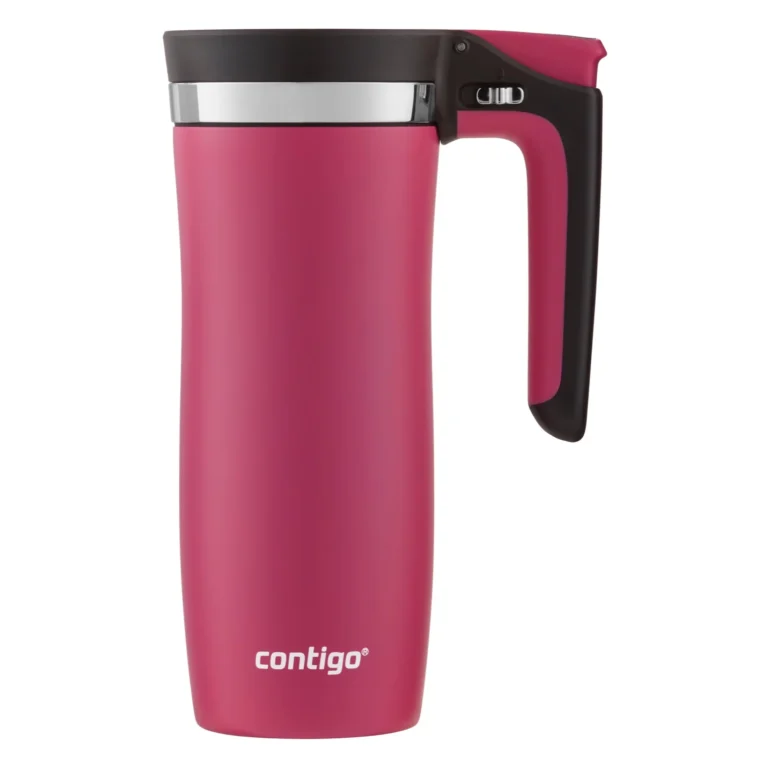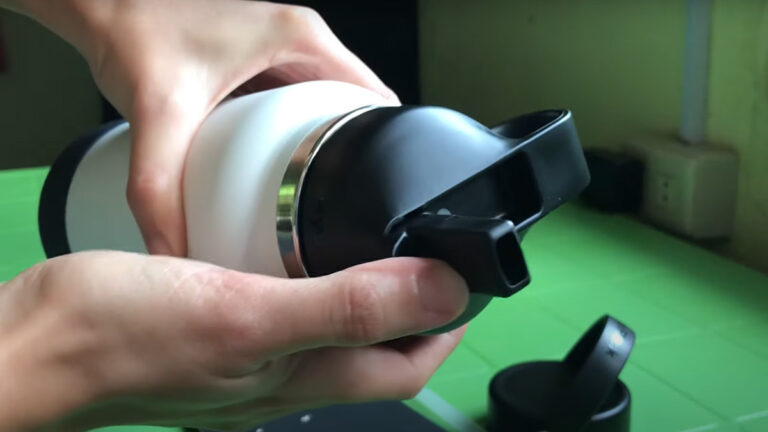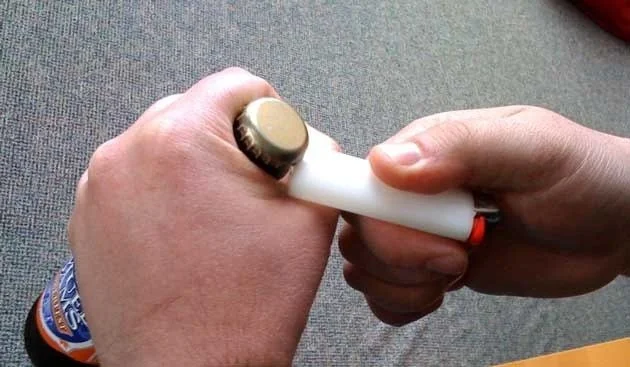Cleaning your water bottle regularly is essential to maintain its hygiene and ensure that you are drinking clean and safe water. Over time, bacteria and germs can accumulate on the inner walls of the bottle, leading to potential health risks. Therefore, it is crucial to learn how to properly clean your water bottle to keep it free from harmful microorganisms.
Cleaning Your Water Bottle with Bleach
Using bleach is an effective way to sanitize and disinfect your water bottle, as it helps eliminate bacteria, mold, and other contaminants. Here’s a step-by-step guide on how to clean your water bottle using bleach:
1. Prepare a Bleach Solution
- Start by preparing a solution of bleach and water. Dilute one teaspoon of bleach in one gallon of water. Ensure that you are using regular unscented bleach.
2. Disassemble the Water Bottle
- Disassemble the water bottle, separating all the removable parts such as the lid, straw, and any other detachable components.
3. Scrub the Bottle
- Using a bottle brush or a sponge, scrub the interior of the water bottle thoroughly. Pay close attention to areas that are prone to bacteria buildup, such as the bottom and the cap.
4. Clean the Lid and Straw
- Submerge the lid and straw in the bleach solution and let them soak for at least five minutes. Then, scrub them with a brush or sponge to ensure that all the surfaces are cleaned.
5. Rinse Thoroughly
- Rinse all the components of the water bottle, including the lid and straw, with clean water to remove any remaining bleach solution.
6. Air Dry
- Allow all the parts of the water bottle to air dry completely before reassembling them. This step is crucial to prevent the growth of mold or bacteria due to residual moisture.
Regular Cleaning and Maintenance
Cleaning your water bottle with bleach should be done periodically, but it is also important to establish a regular cleaning routine to prevent bacteria buildup. Here are some tips for maintaining a clean water bottle:
- Wash your water bottle with soap and warm water after each use to remove any residual liquids.
- Avoid using abrasive cleaners or brushes that could damage the bottle’s surface.
- Store your water bottle in a cool and dry place to prevent the growth of mold or mildew.
- Consider using a bottle brush specifically designed for cleaning water bottles to ensure thorough cleaning.
By following these simple steps, you can keep your water bottle clean and safe to use, ensuring that you remain hydrated with fresh and healthy water.
Preparing the Cleaning Solution
Cleaning your water bottle with bleach can effectively remove stubborn stains and kill bacteria. However, it’s crucial to dilute the bleach properly to ensure its safe and effective use. Here’s how you can dilute bleach for cleaning your water bottle:
- Gather the necessary supplies:
- Liquid bleach (preferably chlorine bleach)
- Measuring cup
- Clean water
- Protective gloves
- Read the instructions on the bleach bottle:
- Different bleach brands may have slightly different instructions, so it’s essential to follow the specific dilution recommendations provided on the bottle.
- Choose the appropriate bleach concentration:
- Generally, a 1:10 bleach-to-water ratio is recommended for cleaning purposes. This means mixing 1 part bleach with 10 parts water. However, some bleach brands may suggest different ratios, so it’s crucial to verify the instructions on the bottle.
- Calculate the amount of cleaning solution needed:
- Consider the size of your water bottle to determine the quantity of cleaning solution required.
- For example, if you have a 500ml water bottle, you’ll need approximately 50ml of bleach solution (1:10 ratio).
- Adjust the measurements accordingly for smaller or larger water bottles.
- Protect yourself:
- Before handling bleach, ensure you are wearing protective gloves to avoid any skin irritation or chemical burns.
- Mix the bleach and water:
- In a well-ventilated area, pour the bleach into a measuring cup following the recommended ratio.
- Add the appropriate amount of clean water to dilute the bleach.
- Gently stir the mixture to ensure that the bleach and water are thoroughly combined.
It’s important to note that bleach can be corrosive, so it’s advisable to avoid direct contact with the bleach solution. Additionally, never mix bleach with any other cleaning chemicals, as it can produce harmful fumes.
By following these steps, you can properly dilute bleach for cleaning your water bottle and ensure a safe and effective cleaning process.
Steps to Clean a Water Bottle with Bleach
Cleaning your water bottle with bleach is an effective way to eliminate bacteria and odors, ensuring that your bottle stays fresh and safe to use. Here are the steps to follow when cleaning your water bottle with bleach:
Step 1: Rinse the Water Bottle
Before you begin the cleaning process, it is essential to rinse your water bottle thoroughly with hot water. This step helps remove any loose debris or residue from the bottle.
Step 2: Create a Bleach Solution
Next, create a bleach solution by mixing one tablespoon of bleach with one gallon of water. Be sure to use bleach that is suitable for disinfecting purposes, as some bleach products may contain additives that are harmful if ingested.
Step 3: Soak the Water Bottle
Once you have prepared the bleach solution, place your water bottle in the mixture and allow it to soak for at least 10 minutes. This soaking time helps to kill any bacteria or germs that may be present inside the bottle.
Step 4: Scrub the Bottle
After the soaking period, use a bottle brush or a sponge to scrub the inside of the water bottle thoroughly. Pay close attention to areas that may be harder to reach, such as the neck and corners. This step helps to remove any remaining residue or buildup.
Step 5: Rinse Thoroughly
Finally, rinse your water bottle with clean water until all traces of bleach are removed. It is crucial to rinse the bottle thoroughly to ensure that no bleach residue remains, as consuming bleach can be harmful to your health.
By following these simple steps, you can effectively clean your water bottle with bleach and maintain a hygienic and safe drinking container.
Remember to clean your water bottle regularly to prevent the buildup of bacteria and odors. Additionally, always check the manufacturer’s instructions for cleaning and maintenance, as some water bottles may require specific care methods.
For more information on cleaning water bottles and other useful tips, check out this article by Healthline.
Safety Tips for Using Bleach
Protective Measures to Take
When using bleach to clean your water bottle, it’s essential to take proper precautions to ensure your safety. Bleach is a potent chemical that can cause skin irritation and respiratory problems if not used correctly. Follow these safety tips to protect yourself while cleaning with bleach:
- Wear gloves: Always wear protective gloves, such as rubber or latex gloves, when handling bleach. This will prevent direct contact with your skin and minimize the risk of irritation or chemical burns.
- Work in a well-ventilated area: Bleach fumes can be harmful when inhaled. It’s crucial to clean your water bottle in a well-ventilated area, such as an open window or outdoor space, to minimize exposure to these fumes. If necessary, consider using a mask or respirator for additional protection.
- Read and follow the instructions: Different bleach products may have specific instructions for usage and dilution. Take the time to read and understand the instructions provided by the manufacturer before using bleach to clean your water bottle.
- Never mix bleach with other chemicals: Mixing bleach with other cleaning agents, such as ammonia or vinegar, can produce toxic fumes. Avoid combining bleach with any other substances and use it only as directed.
- Use bleach in the recommended concentration: Dilute bleach with water according to the instructions on the label. Using bleach in a higher concentration than recommended can make it more hazardous and increase the risk of damaging your water bottle or causing harm.
- Rinse thoroughly: After cleaning your water bottle with bleach, make sure to rinse it thoroughly with clean water to remove any remaining bleach residue. Failure to do so may result in a lingering bleach smell or taste.
By following these safety tips, you can safely and effectively clean your water bottle with bleach. Remember to always prioritize your well-being and take the necessary precautions to avoid any potential risks.
Alternative Methods for Cleaning Water Bottles
Non-Bleach Cleaning Options
If you prefer to avoid using bleach to clean your water bottle, there are several alternative methods that can effectively sanitize and remove stubborn stains. Here are some non-bleach cleaning options to consider:
1. Vinegar Solution: Vinegar is a natural disinfectant and can help remove odors and stains from your water bottle. To use this method, mix equal parts of vinegar and water in your bottle, shake well, and let it sit for a few minutes. Rinse thoroughly with water afterwards.
2. Baking Soda Paste: Baking soda is another natural cleaning agent that can effectively remove dirt and odors. Create a paste by mixing baking soda with a small amount of water, then apply it to the inside of your water bottle and scrub gently with a brush. Rinse thoroughly with water afterwards.
3. Lemon Juice: Lemon juice contains citric acid, which has natural antibacterial properties. Squeeze fresh lemon juice into your water bottle, add some water, and let it sit for a few minutes before rinsing thoroughly. This method can help eliminate odors and stains.
4. Hydrogen Peroxide: Hydrogen peroxide is a mild bleach alternative that can effectively kill bacteria and remove stains. Dilute hydrogen peroxide with water in a 1:1 ratio, pour it into your water bottle, and let it sit for a few minutes before rinsing thoroughly.
5. Dishwashing Liquid and Hot Water: If you’re looking for a simple and easy cleaning method, using a dishwashing liquid and hot water solution can do the trick. Fill your water bottle with hot water and add a few drops of dishwashing liquid. Shake well, let it sit for a few minutes, and then rinse thoroughly.
Remember to always follow the manufacturer’s instructions and recommendations when cleaning your water bottle, as different materials may require specific cleaning methods. Regular cleaning and proper maintenance of your water bottle are essential to ensure it remains safe and hygienic for everyday use.
By utilizing these non-bleach cleaning options, you can effectively maintain the cleanliness and functionality of your water bottle without the use of harsh chemicals. Find the method that works best for you and make it a regular part of your cleaning routine to keep your water bottle fresh, odor-free, and ready to use.
Maintaining Cleanliness
Regular Cleaning and Maintenance Tips for Water Bottles
Keeping your water bottle clean is essential for maintaining good hygiene and preventing the buildup of bacteria and odors. Here are some tips to help you effectively clean and maintain your water bottle:
- Wash with dish soap and water: Start by rinsing your water bottle with warm water to remove any residue. Then, add a few drops of dish soap and fill the bottle halfway with warm water. Close the lid tightly and shake the bottle vigorously for a minute or two. Rinse it thoroughly with warm water until all the soap is gone.
- Use a bottle brush: For bottles with narrow openings or hard-to-reach areas, a bottle brush can be a handy tool. Gently scrub the inside of the bottle, paying extra attention to the bottom and corners. Rinse it thoroughly to remove any loosened dirt or soap residue.
- Consider using bleach for deep cleaning: If your water bottle has developed persistent stains or odors, you can use a diluted bleach solution. Mix one teaspoon of bleach with one gallon of water, and fill the bottle partially with the solution. Close the lid tightly and shake the bottle to thoroughly distribute the solution. Let it sit for a couple of minutes, then rinse it thoroughly with warm water. Make sure to remove all traces of bleach before using the bottle again.
- Avoid using abrasive cleaners or tools: While it may be tempting to use abrasive cleaners or tools to scrub your water bottle, these can cause damage, especially on plastic or metal surfaces. Stick to soft-bristle brushes and non-abrasive cleaning solutions to protect your bottle.
- Allow it to air dry: After cleaning, make sure to leave the bottle uncapped and upside down to air dry completely. This will help prevent the growth of mold or mildew.
- Regularly replace the bottle’s lid or straw: Over time, the lid or straw of your water bottle may develop cracks, become discolored, or retain odors. Regularly check and replace these components to maintain the cleanliness of your water bottle.
Remember to clean your water bottle regularly, ideally after each use, to prevent the buildup of bacteria and odors. By following these cleaning and maintenance tips, you can ensure that your water bottle stays clean and safe to use.
For more information on water bottle cleaning and maintenance, check out this helpful article by Healthline.
Benefits of Regularly Cleaning Water Bottles and Final Thoughts
In conclusion, regularly cleaning your water bottle is essential for maintaining good hygiene and preventing the buildup of harmful bacteria. By following the steps outlined in this article, you can effectively clean your water bottle using bleach and ensure that it remains safe for use. Here are some key takeaways and benefits of regularly cleaning your water bottle:
- Prevention of bacteria growth: Cleaning your water bottle regularly helps prevent the growth of harmful bacteria, such as E. coli and Salmonella, which can cause illnesses.
- Removal of odors and stains: Over time, water bottles can develop unpleasant odors and stains. Regular cleaning with bleach can help remove these odors and stains, keeping your water bottle fresh and clean.
- Extended lifespan: Proper cleaning and maintenance can extend the lifespan of your water bottle, ensuring that it remains durable and functional for a long time.
- Improved taste: A clean water bottle enhances the taste of your beverages, allowing you to enjoy refreshing drinks without any unpleasant flavors.
- Hydration motivation: When your water bottle is clean and appealing, you are more likely to stay hydrated throughout the day. This can have numerous health benefits, including improved digestion, increased energy levels, and better overall well-being.
Remember to always follow manufacturer’s instructions and guidelines when cleaning your water bottle. Additionally, avoid using harsh chemicals or abrasive materials that could damage the bottle or leave residue.
Cleaning your water bottle regularly is a small but important step towards maintaining good health and ensuring the quality of your drinking water. By incorporating this simple practice into your routine, you can enjoy the benefits of a clean and safe water bottle every day.
In conclusion, cleaning your water bottle with bleach is a straightforward and effective method to ensure proper hygiene and prevent bacterial growth. By following the steps outlined in this article, you can keep your water bottle clean, odor-free, and safe for use. So, go ahead and give your water bottle a thorough cleaning to enjoy refreshing beverages with peace of mind!




